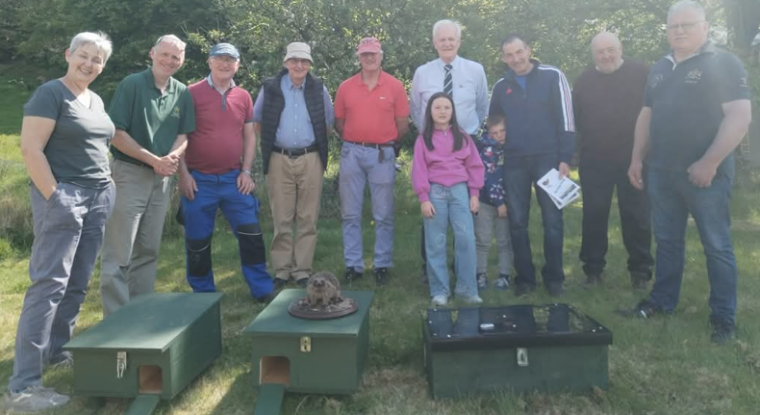Reverend Captain Richard Beadle sent us this update:
(Permission given for all photos to be used)
St James Church of Ireland Donemana had a special day in May to highlight both nature and the Anglican Church Mission Mark ‘Treasure’ to safeguard the integrity of God’s creation and to sustain and renew the life of the earth.
Over the last year, the Rectory garden has seen may changes to help it become more nature friendly. Mowing patterns have changed in line with the All-Ireland pollinator plan and patches of long grass have provoked some heated discussion, though more and more folk are getting a sense of the vision. Communication is vital as changing values can be so hard, especially when we have grown up with ‘neat and tidy’ for so long. The garden has been registered as a space for nature with both the ‘All Ireland Pollinator Plan’ and ‘Butterfly Conservation wild spaces’.
A lot of planting for pollinators has taken place including autumn wild daffodil bulbs and crocus and climbers. A bed in the top of a low wall was planted with pollinators with the help of the Eco Congregation grant. Numerous bird boxes have also gone up for sparrows, starlings, house martins and tits. Last summer, ten different species of butterfly were recorded and the church families were given the task of telling us their favourites. The Peacock butterfly was the favourite followed by the Small Copper.
As part of our Rectory nature day, we had special guests and a talk by a lady from Ulster Wildlife on Hedgehogs. Two hedgehog homes and a feeding house were then sited in the garden. These had been built by the local village Mens shed. Just by chance the chosen day had coincided with Hedgehog awareness week.


The night before we had a family bat night with help from the Northern Ireland Bat Group. It was a wonderful evening with quizzes and games before we went out checking for bats around the rectory and church grounds. Four bat species were recorded flying around and three of these were also roosting in the church building. Our favourite was the long-eared bat. It was a brilliant and late night. One of the young lads left saying to his mum it was the ‘best night ever.’

The evening has made us aware that we will need to be mindful of the bats in our planning of future building works. Before the bat evening it would likely have taken place without giving the bats a thought, now the Rector will be working with the church vestry to ensure they are protected through any necessary works.

Rev Canon Trevor Sargent wrote about butterflies in a recent ECI newsletter so would be delighted to see the butterflies made by our children that decorated the Easter cross, a glorious symbol of resurrection and new life.
On our rectory garden journey, we have also discovered that the local landed family of 160 years ago were also keen naturalists. One story is of two young boys age five and six who were taught the life cycle of an orange tip butterfly by their teacher who was shared her passion for wildflowers and butterflies. One of the brothers, Claud Ogilby later generously gave a large gift that enabled the present church to be built. The other went to Australia as a much-respected zoologist. A love of nature lies at the heart of our local heritage but had been largely forgotten. Please God, this church can be used to open eyes of wonder to God’s creation to many.

